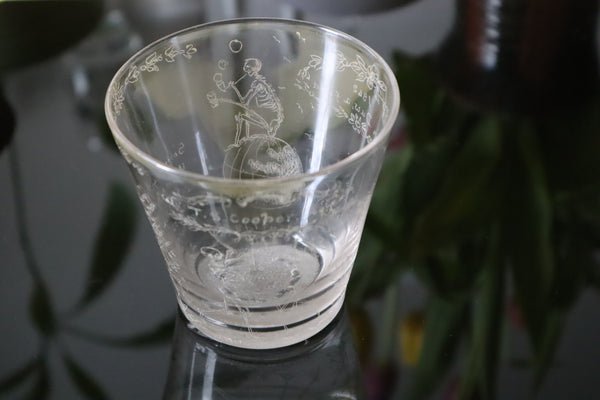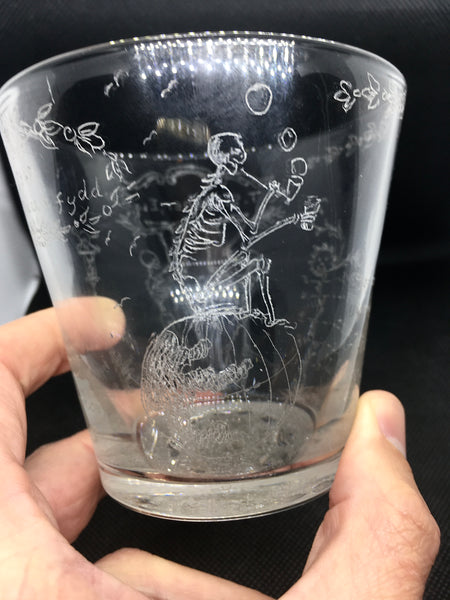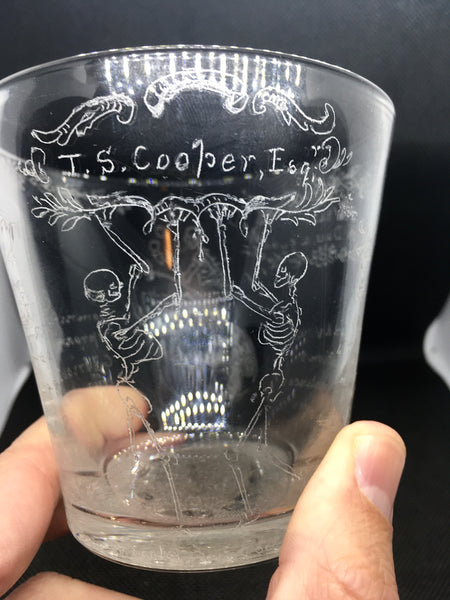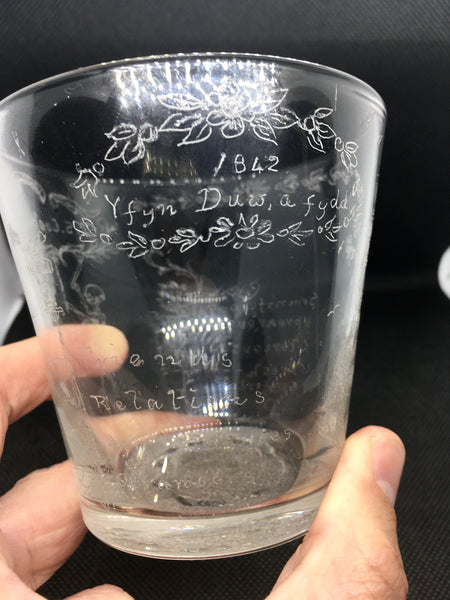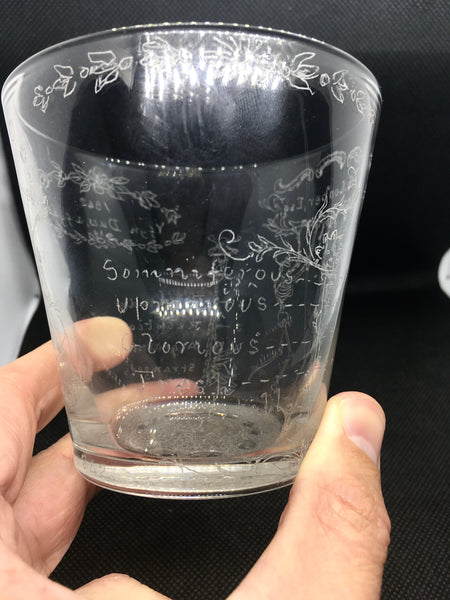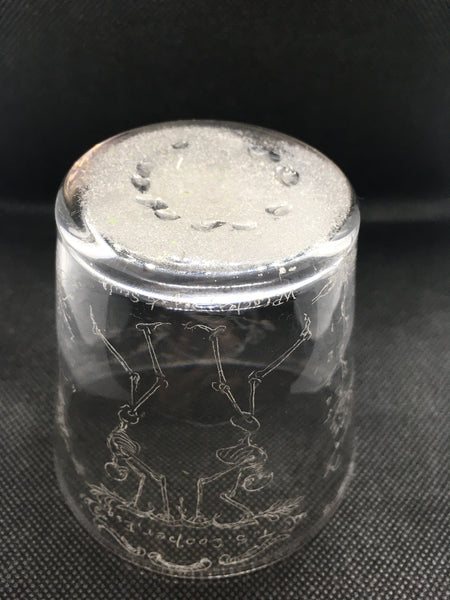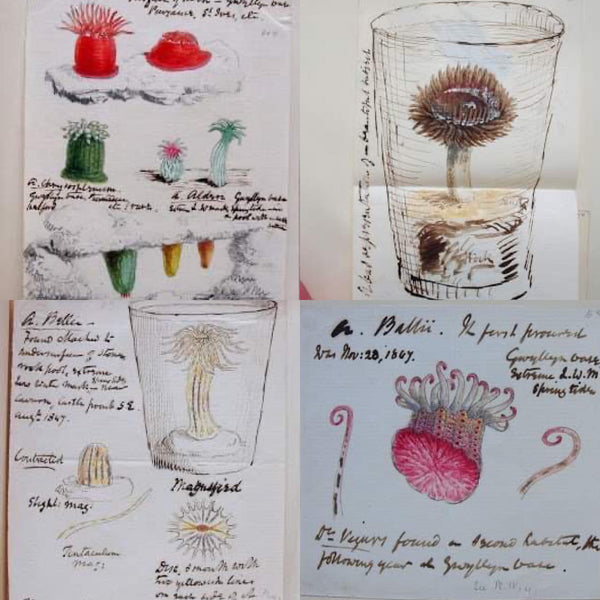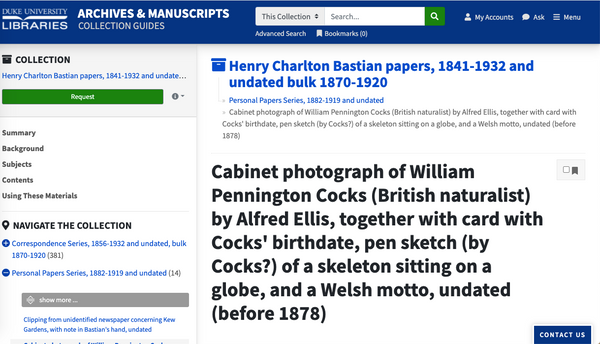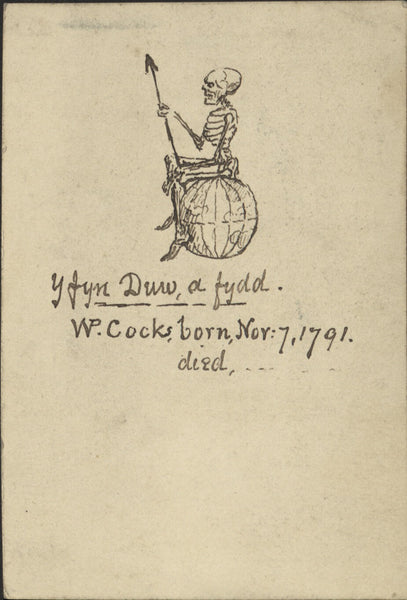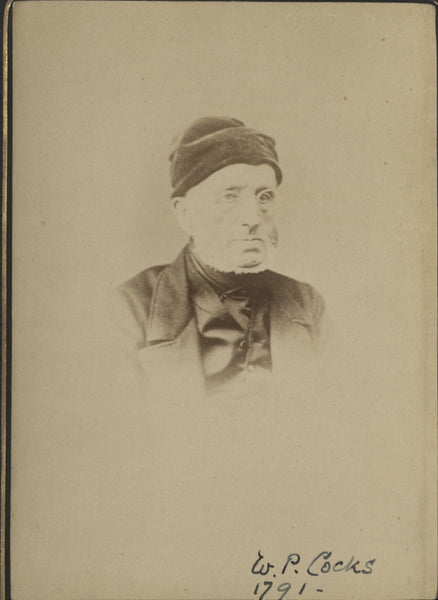*RESERVED FOR RONI* Rare Victorian Tumbler Etched By Renowned Naturalist & Artist William Pennington Cocks 1842
|
FREE UK & WORLDWIDE SHIPPING ON ALL ORDERS |
A Superb Rare One-Off Personalised Gift Of A Victorian Tumbler Etched By Renowned Naturalist & Artist William Pennington Cocks 1842.
Condition is good. No cracks or chips.
Measures 8.5cm x 8.5cm
Weighs 205.74 grams
Signed “WP Cocks” along with the wording "Des et sculpo". “Sculpo” is latin for to carve or to engrave.
William Pennington Cocks' (1791-1878) was an avid naturalist in Cornwall, who trained as a surgeon, but retired from medicine due to ill health. While still a medical man his drawings were used for Professor Cooper's 'Dictionary of Surgery' as well as in works by other leading medical men. With his artistic skill, coupled with a fine sense of humour, Cocks later found an outlet in political cartoons.
Cocks would place sea anemones into tumblers of sea water to facilitate observation and sketch them accordingly. This is thought to be one of his specimen glasses, with the wear to the base of it seemingly supporting this theory.
There is also a Welsh motto, "Yfyn Duw, A Fydd", which translates as "what god willeth will be".
There are also levels on either side of the glass which represent a personal element to the piece. First you have what looks like a sunflower, with a series of level increments, with the words; Comfortable, Fresh, Glorious, Uproarious and Somniferous. And, on the other side, the level increments have the words; Strangers, Acquaintances, Relations and Friends.
I discovered that a university in America has a pen sketch by William Pennington Cox in their archives which they describe as being of a skeleton sitting on top of a globe and a Welsh motto. I contacted them and requested an electronic copy of this sketch (please see last photos).
My research into the other name on the glass, “T.S. Cooper Esq.” has been difficult, however, Cocks did do the illustrations for a "Professor Cooper's 'Dictionary of Surgery'". Professor Cooper? I researched this book and found that it was written by a Samuel Cooper (1780-1848)...
Samuel Cooper was an English surgeon and medical writer. In 1813 he entered the army as a surgeon and served at the battle of Waterloo. Retiring on the conclusion of peace, he devoted his attention to editing the successive editions of his two principal works, and also gained a considerable surgical practice. From 1831 to 1848 he was surgeon to University College Hospital and professor of surgery in the college. In 1845 he was elected president of the College of Surgeons, and in 1846 Fellow of the Royal Society. He died of gout on 2 December 1848.
So, did Samuel Cooper have a first name that began with 'T' that he didn't use, that Cocks was aware of...? Some people use their middle name, instead of their first name, don't they...? I mean, the connection is there for us all to see. It has to be the Cooper we're looking for...right...?
Nevertheless, William Pennington Cocks’ work was admired by some rather important people, none more important than Charles Darwin.
Cocks donated a small collection of his studies to the British Museum in 1849. This included specimens of Balanus tintinnabulum, an extremely variable species and this probably explains why Charles Darwin wished to examine the collection. In a letter to curator John Edward Gray in January 1851, Darwin wrote: "I will be here tomorrow morning at 10 oclock, & as I have very much to do will you kindly oblige me by having Spengler on Cirripedia (which you once showed me) ready for me.- Also I want to look at the rest of the sessile Cirripedia in the Collection, for praise be to Heaven, I have finished Balanus. And Lastly could I see Mr. Cocks' collection?
This is a very very interesting item, full of intrigue and possibility. It’s already of scientific interest, with William Pennington Cocks confirmed as the artist. But it may also very well be a piece of significant art history.
Cocks’ art work sales for thousands of pounds, but I’ve been told by museums and experts that this is the only piece of his work that they’ve seen on glass. A complete one-off!
Thanks for reading.











